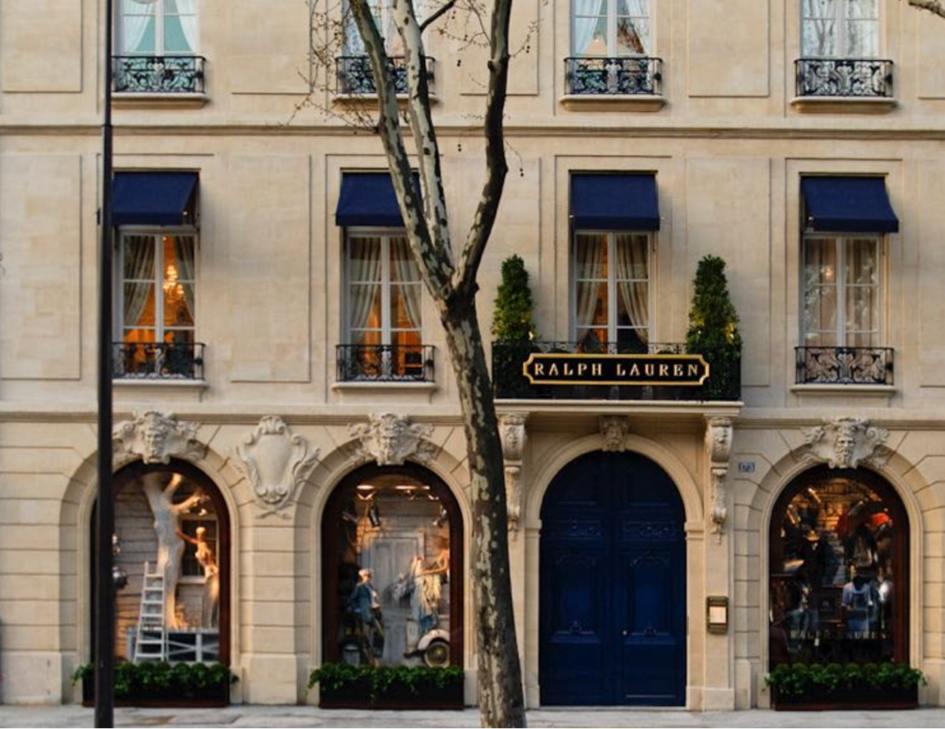
Flagship stores: Unique territories for luxury
Located on the world's most beautiful avenues, competing in terms of aesthetics and displaying signature designs, flagships stores, these emblematic boutiques, true flagships of luxury brands, attract thousands of visitors every year.
But, in the age of digital and dematerialized shopping, what strategies are hidden behind these iconic facades? Unique representation and powerful marketing tool, zoom on points of sale like no other...
The customer experience: a major challenge
The largest Ralph Lauren flagship store in Europe is located in the heart of the Quartier Latin, in Paris. Behind a massive porte cochere, you can lunch, dine and of course discover the various collections spread over the different floors of this extraordinary mansion on the boulevard Saint Germain. Here, the collections rub shoulders with the "made in USA" lifestyle and the details so dear to the brand. More than 1200 m² are dedicated to the world of Ralph Lauren where nothing is left to chance. In this particular space, you don't just come to buy but to immerse yourself. And since imagination is an integral part of the luxury discourse, it is essential to differentiate oneself to seduce. In parallel with digital concerns aimed at optimizing the customer experience, luxury houses are also banking on immersive and representative physical locations. The challenge is to be able to enhance the value of the brand by representing its own values and an ever more remarkable identity. At Gucci and Chanel, the focus is on the friendly and comfortable side with "private apartment" style boutiques, while at Isabel Marrant the flagships are more refined, almost minimalist. As Thibaut de La Rivière, director of Sup de Luxe, confirms: "Location, window displays, targeted merchandising, events... Today, the point of sale is the vehicle for communication that is both sophisticated and accessible. Sensory marketing not only enhances the experience, but also strengthens relationships with customers". In fact, it is a question of perpetuating the link between the brand and the visitor to encourage a sense of belonging and a certain proximity.

Hybrid points of sale: a strategy that pays off
Although shopping habits have evolved considerably over the last few years (notably through digitalization and e-commerce), nearly 75% of purchases are still made through physical points of sale. In the luxury sector more than anywhere else, brands therefore need places to spread their storytelling and values. This physical distribution is also accompanied by a digital dimension. Indeed, far from opposing these two notions, luxury is opting for a hybridization of these marketing tools and not only via pop-up stores. The trend? Opening fewer stores but more impactful and immersive points of sale.
An example of this marriage between digital and physical is the Shiseido store in Tokyo, which does not offer any products for sale, but a totally high-tech experience that allows people to learn more about the brand and its different ranges via digital tools. There is also a somadome specially designed for meditation to "awaken your inner beauty", a concept dear to Shiseido. A space that has been able to adapt to new consumer trends while concretely materializing its image, that is the recipe for a successful flagship store. While the setting is essential and the experience is paramount, we must not lose sight of the fact that traffic must also be profitable. To achieve this, the stores offer exclusive products, limited collections and only available in certain targeted points of sale. This exclusivity allows them to stand out from the crowd and bring added value to the e-commerce market.